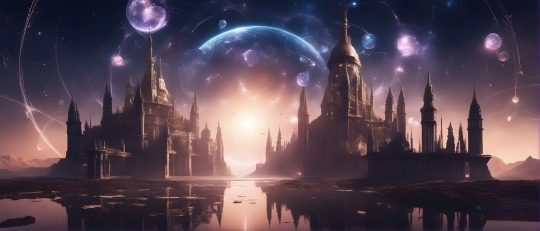#Cosmic Bridge
Explore tagged Tumblr posts
Text
Hello my little stars my name is Mairo Haboshi but you can call me Mai if that’s easier.
Welcome to my ask page
Here is a bit about my oc
Name:
Mairo
Haboshi
Nick names: Mai, the strategist, my dear star, princess, Mimi, hosta
House: Hotarubi
Year: 3rd
Birthday: 6/3
Star sign: Gemini
Likes: creativity
Artifact: strategists feather fan
-can create a shield over her body when held up and when swiped can push enemy back 10ft
(香蕉叶扇; Xiāngjiāoyèshàn)
Stigma: Tallos- dowsing: finding things and truths.
Downside: has to use a medium to use it she mainly uses a pendulum.
Makes her tired/sleep if used too much.
Abilities:
-Stigma: she can find the true direction object, people and anomalies with just description she has a better chance with an item that belongs to them or a photo of what she needs to look for. She can detect lies since it only shows her true directions even in people’s souls.
-Other: She knows defensive martial arts started learn it in her late teens because of her strength. and use to do street fighting in her teens as a way to cope with her anger.
Brief Backstory:
Raised by her mother and her grandparents until she was 16 (grandpa died when she was 6 mother died when she was 13, grandma died when she was 16) then her then forced to live with her father and his family who were all awful to her some worse then others.
One particular bad night she thought she was actually gonna die and started to dissociate herself she met her demon who and made her pact with thinking it was just an illusion of sorts to cope with her abuse. She gave up a “piece” of herself and the demon took all the lives and souls of her “family”.
When she fully realized it wasn’t an illusion was when her father collapsed in front of her and then she had to fight off the change in which she survived.
She avoid darkwicks eye for a few more years until she got caught street fighting on camera with her inhuman strength. Then was made to go to darkwick after high school
Weaknesses:
-Has ptsd from her past living with her father befor the ghoulafation.
-insecure about herself about certain things.
-can become very tired if she uses her stigma too much or for too long, she will sleep for hours or days in a coma like state.
Additional Information:
* eyes: teal
* hair: lavender purple
* she comes from a family of artist and astronomers (mothers)
* her name shows this
Mai-ro (ten thousand-colours)
Ha-boshi (feather/winged-star)
* Her name means a ten thousand colourful - comets or shooting stars (winged star)
* She draw and paints and loves crafts, because of her mother and her mother’s family she dabbles in poetry and astronomy as more of a hobby.
* She is apart of same group as are current third years.
* she has a knack for making friends with anyone.
* she loves to dress in alternative fashion. At first glance people and ghouls alike thought she be put into Vagastorm (didn’t help that she punched out a third year on entrance day)
* she has a close friendship with her fellow housemate Subaru (and Zenji)
* though she likes haku and is happy he joined there house she just can’t fully trust him.
* she was there when Zenji got injured before his death and tried to help him.
* after the clash she was made to use her stigma to many times for very long stints for a month and because of the side effect she went into a deep sleep. She awakes after the third year starts.
* she is close friends with Tohma and by being around also Alan. Hung out in vagastorm so much in her 1st yr people thought she was gonna switch to that house come her 2nd year.
* initially became friends with Tohma because she was crushing on him after the first week at school.
* she loves the atmosphere of hotarubi and just feel like it’s the best fit for her personality and likes so doesn’t see the point in switching.
* because of her stigma she is asked to help with other houses on certain missions especially if they are struggling to find or need to find someone or something fast. Because of this she has worked with all of her year and treats them as her friends, some are closer then others.
* she hides behind a cheery personality and only those closest to her have seen hints of her truer side.
* she will use her knowledge and abilities to gain the upper hand on things and to manipulate the situation to her favour if needed this mostly involves making sure the boys don’t kill each other, and navigating the schools treatment of the ghouls.
* this became a very important aspect to her after Rui was cursed and his treatment by the school.
* yes she does find out about Zenji being a spook(having a doll and a biwa floating around is already a tall tell sign something is fishy) even though Zenji didn’t want her to find out she was mad at him for making Subaru and MC lie to her. Then she also got mad at haku for not telling her either.
* she finds it fascinating he’s a ghost though because you know soul pacts and what not. She does keep Zenjis wish’s and doesn’t tell anyone else.
* though I mainly made her as a love interest for Tohma, I am open to role playing with others.
#tokyo debunker#tokyo debunker oc#oc biography#tdbk#tdb#Mairo Haboshi#mairos comet#she really likes Tohma#cosmic bridge
12 notes
·
View notes
Text
I will post here, because damn.
Why are you looking so good in these pictures.
Upcoming card!
There's actually two but the other one's images and name and such aren't in the files yet. I even waited to see if they would add them and no dice! Maybe in a couple days. Anyway Onsen Tohma!!!! Also I've included the unit's stats under the cut at the end for anyone looking for those!


No feet. . .but we do get a little ankle so it's something.
Character Card: Restful Moment(���侠客の貴重な平穏」 "The Fake Gentleman's Precious Rest" (a 「侠客」 is a "self-styled humanitarian, person acting under the pretence of chivalry while participating in gangs and engaging in gambling" so basically 'gangster pretending to be a knight' which is. Basically what Tohma is lmao)) Skill: Pulls Off A Yukata(「浴衣の似合う男」 "A Yukata Suits Him") Fully Awakened Skill: Solid Physique(「動じぬ体躯」 "Unshakeable Physique") Warding Card: Vacation Itinerary(「相伴も従者の仕事」 "Participating And Doing Servant Work" as in 'he's working for Jin while on vacation')
There are new cosmic bonds again! As usual I don't know what units are in these, sorry.
The Whimsy Of Jabberwock (「ジャバウォックと忍び寄る非日常」 "Jabberwock And The Creeping Extraordinary")
Clear Skies (「本日は晴天なり」 "Fine Weather We're Having Today")
Searching For A Missing Piece (「欠けたピースを探して」 "Searching For A Missing Piece")
The usual warnings apply!
Gacha is gambling! Banners rerun! Don't spend anything you can't afford to lose! Even if you don't get a unit this time it'll be back in the coming months. Be mindful of what you're spending and remember that you don't truly own any of these things!
My Japanese is not very good, so take my translations with a grain of salt!
Take breaks no matter how hard you work. Give yourself, your body, and your mind credit for getting you through every day. You've only got this life to be the you you are and are meant to be now and one body to do that with. Please take care of yourself. Tohma would want you to.
Unit stats under the cut!

102 notes
·
View notes
Text
Om Unit himself wrote on instagram "old school cosmic bridge vibes" and is 100% on point with that. Versa transfers the original tunes perfectly in this spaced out dub vibe.
0 notes
Audio
album stream: Crypticz - Transition of Eye (Cosmic Bridge, 2023)
#Crypticz#Transition of Eye#bass#broken beats#electronica#dubstep#drum and bass#brokenbeats#cosmic bridge#album stream
1 note
·
View note
Text

i AM the #1 green ranger defender and no one can say otherwise
#power rangers#mighty morphin power rangers#power rangers zeo#power rangers turbo#power rangers lost galaxy#power rangers lightspeed rescue#power rangers time force#power rangers ninja storm#power rangers spd#power rangers mystic force#power rangers rpm#power rangers samurai#power rangers megaforce#power rangers dino charge#power rangers dino fury#power rangers cosmic fury#tommy oliver#adam park#carlos vallerte#damon henderson#joel rawlings#trip regis#cam watanabe#bridge carson#xander bly#ziggy grover#mike#jake holling#riley griffin#izzy garcia
164 notes
·
View notes
Text






I JUST CANT SAY GOODNIGHTTTTTTT
#spotify#music#gg music#red velvet#cosmic#song of the year#memes#meme moodboard#ugly moodboard#tws#dohoon#kim dohoon#tws dohoon#dohoon icon#dohoon moodboard#kpop bg#archive#aesthetic#moodboard#kpop#icons#kpop moodboard#messy moodboard#random moodboard#wendy williams#internet archive#vocals#wendy#bridge#soty
100 notes
·
View notes
Text

plane watching
#cosmic chatter#bnha#rody soul#blorbo tag#my art#id in alt#i put WAYYYYY too much effort into this sobs#i wasnt really gonna bother w the bridge and the city in the background#and i didnt but ohhhh
40 notes
·
View notes
Text
So I watched the SPD episode "Zapped" this morning and something dawned on me.
"Zapped" is your classic "Ranger gets brainwashed" episode. What's unique is how they snap Syd out of it: Bridge tricks her into morphing. The implication is that SPD has found a way to mind-control-proof their Ranger tech. This dovetails really well with the season's biggest twist: that the A-Squad aren't under mind control, but freely chose to side with the bad guys.
And then you factor in Cosmic Fury. Obviously the SPD writers didn't know this, but it fits really well with Ollie's storyline: his Dino Fury "Ranger energy" is turned against him, and the only way to get him back to normal is to get rid of that power set. Since Cosmic Fury takes place in 2023 and SPD in 2025, it's likely that Kat Manx and the other SPD scientists learned what happened to him and made brainwash-proofing a top priority.
111 notes
·
View notes
Text
sitting and taking a deep breath because jayvik is THE most florence and the machine coded ship i have ever enjoyed and i have NOBODY to talk to about it
#IM LISTENING TO SYMPHONY OF LUNGS. AGAIN.#AND MY GODDDDDD#THE HARDEST OF HEARTS BRIDGE? COSMIC LOVE#SHAKING YOUR SHOULDERS GUYS THEYRE LITERALLY COSMIC LOVE#coveredinsunposting#jayvik#arcane
29 notes
·
View notes
Text
Tagged by @mo-ok and @tokuxsenshi :3 Thank you for the taaaag~
Challenge: make a poll with five of your all time favorite characters, and then tag five people to do the same. See which character is everyone's favorite.





I THINK WE ALL KNOW WHO'S WINNING THIS ASDHFGBDS
Tagging: @augment-techs @ineedsomesleeptoday @ajgrey9647 @spookyblazecoffee @lordkingsmith
#power rangers#power rangers dino fury#power rangers cosmic fury#power rangers dino charge#power rangers beast morphers#power rangers spd#bridge carson#amelia jones#roxy#javi garcia#heckyl#polls
52 notes
·
View notes
Text

Einstein's Bridge
#art#ai artwork#william t. ayton#ai art#ai generated#artists on tumblr#ai#leonardo ai#visionary#science fiction art#scifi#cosmic#bridge#planets#stars#nebulae
10 notes
·
View notes
Text
10/10 🌅🌆
#after a whole year my girls delivered (as expected) 💯#another great album (mini… I want a full one so badly but I know how busy they’ve been)#they truly have such an amazing diverse discography already#their music has been incredibly well produced since debut and really highlights their vocals well#I love how they are 10 years into their careers but still constantly trying new things and showing artistic growth#you can tell how much they love what they do#SinB’s rap in Cliché I was gagged that’s a whole new tone for her I love it#I NEED to see Cliché’s choreo it’s so powerful and cunty… hopefully they pull an Untie with this one!#but Shhh! was the right choice for title track it’s so catchy and danceable#Full Moon could be my number 1 and one of my favorite VIVIZ songs ever & songs this year but it’s criminally short and missing a bridge :(#still LOVE it!! Cosmic girls VIVIZ 🙌🏼 again something they’ve never tried before#I really like Hypnotize! I love their jazzy rnb tracks so much (like Overflow) suits their voice so much#this one also has a cosmic/ spacey vibe 🌌 fits with the Voyage (so many French titles I’m proud) concept 🚀#Love & Tears is so special & emotional (written AND composed by our Umji 🥹) tho it’s not something I would listen to often I still#appreciate it a lot (the production and their vocals are so good once again)#very very very proud of these girls 🥰🥰🥰#viviz#voyage#kpop#girl groups#ggs#EP#album#mini#2024#music#eunha#SinB#Umji
2 notes
·
View notes
Text



"Bring me back my 2007! — 'Kay, here you go"🏰 Complete with the squared paper background for better immersion. Loved sketching with black ballpoint pen all the way back then🖤
#enchanted castle#castle#celestial wonders#saturn#cosmic#spiritual#black pen#pen sketch#architecture#ballpoint pen#dreamlike#oldschool#2007#seashore#sunset#precious#beacon#bridge#ship
7 notes
·
View notes
Text
I love you a.drian chase
#he makes me feel like a t.aylor swift bridge.#I can't contain myself#f/o:adrian#he makes me feel like a whole tswift bridge AND song. i lapsed back into swiftieism bc of him. we r singing her to each other.#i would invite taylor to our wedding and in my selfship she would come LMFAOOO#btw im obsessed with 1989 tv this was the last time I was deeply in the swiftie hole (2014) so everything is aligning cosmically.#I have always loved synthesisers lol and I think there is even more in tv. more twinkles please sir#Spotify
7 notes
·
View notes
Text
youtube
BLOOD INCANTATION-OBLIQUITY OF THE ECLIPTIC
#BLOOD INCANTATION#PROGRESSIVE DEATH METAL#COSMIC DEATH METAL;#HEAVY METAL;#METAL#DEATH METAL;#2023 EP#LUMINESCENT BRIDGE#Youtube
9 notes
·
View notes
Text







Stellar Haven: Nexus of Cosmic Realms
#Ultrelfium Constellations#Ethereal Palaces#Cosmic Energy City#Multidimensional Hub#Epoch Witnesses#Celestial Dances#Stardust Trade#Crystallized Towers#Dimensional Portals#Bridges Of Light#Time Flow Wonders#Celestial Artifacts#Knowledge Exchange#Starlight Architecture#Pocket Dimension#Art Gallery#Cosmic Inspiration#Dimensional Art#Celestial Visions#Creative Realms#Stellar Elegance#Ethereal Sculpture#Abstract Cosmos#Surreal Realities#Transcendent Colors#Otherworldly Forms#Astral Edifice#Luminescent Design#Dreamlike Spectacle#Infinity Exploration
2 notes
·
View notes